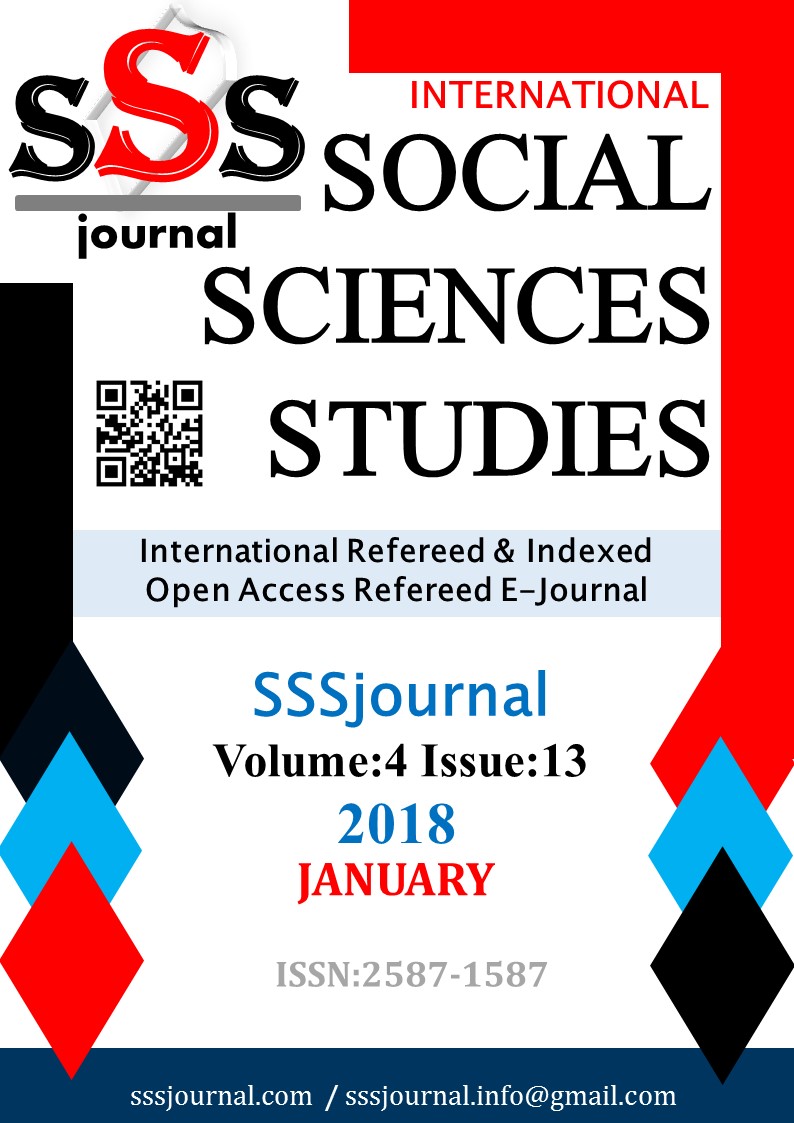Author :
Abstract
Lojistik sektörü, ekonomiye katkı anlamında ileri-geri bağlantıları yüksek olan bir sektördür. Bu nedenle ekonomik kalkınmada önemli olan ana sektörlerin geniş kapsamlı gelişimi için daha hızlı, düşük maliyetli ve sistemli bir lojistik ağına ihtiyaç vardır. Türkiye’de lojistik sektörünün ekonomiden aldığı pay %8’lerdeyken bu oran gelişmiş ekonomilerde %12 civarındadır. Bu durum Türkiye’de lojistik sektörüne verilen önemin yeterli olmadığı anlamına gelmektedir. Bu çalışmada Türkiye’de lojistik sektörünü yapısal açıdan analiz etmek ve lojistik sektörleri ile bağıntılı diğer sektörler arasında ilişkilerden doğan yapısal ilişkileri belirlemek ve sektörlerle arasındaki bağlantıları Input-Output (Girdi-Çıktı) Analizi çerçevesinde ortaya koymak amaçlanmıştır. Dünya Input-Output Veri Bankası’ndan elde edilen Girdi-Çıktı Tabloları bu çalışmanın temel verilerini oluşturmaktadır. Bu doğrultuda başlangıç olarak Endüstriyel İşlemler Tablosu hazırlanıp matematiksel formel işlemlerle Leontief Matrisi ve Leontief Ters Matrisi elde edilmiştir. Bunlara ek olarak; üretim, gelir çoğaltanları ve ekonomik etki katsayıları gibi enstrümanlar hesaplanmıştır. Elde edilen sonuçlar değerlendirilip yorumlanmıştır.
Keywords
Abstract
In terms of its contribution to the economy, logistics is a sector with a high back-and-forth linkage. Therefore, there is need for a faster, less costly and systematic logistics network for comprehensive development of key sectors that play crucial role in economic development. While logistics sector's share in economy is 12% in developed economies, it is only 8% in Turkey. This indicates that logistics sector does not receive sufficient importance in Turkey. This study aims to analyze the logistics sector in Turkey from a structural point of view, to determine its structural relations with other sectors, and to point out the connections with the sectors within the context of Input-Output Analysis. The Input-Output tables derived from the World Input-Output Data Bank are the basic data used in this study. First, we prepared an Industrial Operations Table and then we obtained Leontief Matrix and Leontief Inverse Matrix by mathematical formal operations. In addition, we calculated instruments such as production, income multipliers and coefficients of economic impact. Finally we evaluated and interpreted the obtained results.
Keywords
- Aldasoro I.Angeloni I. (2013).”Input-Output-basedMeasures of SystemicImportance” MPRA Paper No.
- Aldasoro I.Angeloni I. (2013).”Input-Output-basedMeasures of SystemicImportance” MPRA Paper No. 49557.
- Aydoğuş, O. (2010). “Girdi Çıktı Modellerine Giriş. Gazi Kitabevi. ISBN:978-605-4334-41-4, Ankara.
- Canlı, B. (2010). “Türk Turizm Sektörünün Girdi-Çıktı Modeli İle Analizi”. Ege Üniversitesi. Sosyal Bilimler Enstitüsü. İktisat Anabilim Dalı, İzmir.
- Çınar, O. (1993). “Türkiye’de Petrol ve Petrol Sektörünün Girdi-Çıktı Analizi”. Yüksek Lisans Tezi. İstanbul Teknik Üniversitesi. Fen Bilimler Enstitüsü, İstanbul.
- Dilber, İ. (2004). “Tekstil Sanayinin Endüstriler Arası Bağlılık ve Ekonomik Etkilerinin Girdi-Çıktı AnaliziYardımıyla Değerlendirilmesi”. Celal Bayar Üniversitesi. Sosyal Bilimler Enstitüsü. İktisat Anabilim Dalı, Manisa.
- Dincel, G. (2014). “Lojistik Sektörü”, TSKB Ekonomik Araştırmalar.
- Gümrük ve Ticaret Bakanlığı. (2013). Gümrük ve Ticaret Bakanlığı’nın Lojistik Sektörüne Yönelik Uygulamaları. Yayın No:8, Ankara.
- Guilhoto J.JM.,Camargo F.S., Imori D. ve Inomata S. (2008). “NationalInput-OutputTable of Brazil”, University of Sao Paulo, Institute of Developing Economies, Brazil.
- Jones, L, L. 1997. Input- Output Modeling and Resource Use Projection. FacultyPaper Series, Dept. Of Agricultural Economics, Texas A&M University, College Station, TX, 30 pp.
- Haeussler, E.F. and R.S. Jr. Paul, 1987. Introductory Mathematical Analysis for Business, Economics and The Life and Social Sciences. Prentice-Hall International Inc., London, UK.
- Karkacıer, O.(2001). “Tokat İli Tarıma Dayalı Sanayi Sektörünün Yapısal Analizi”, Bir Input- Output Analizi, Tokat.
- Kayacan, B. (2007). “Ulusal Ekonomide Ormancılık Sektörü: Tanımsal Girdi-Çıktı Analizi Bulguları”. Verimlilik Dergisi. ISSN: 10113-1388.
- Kowalewski, J. ( 2009). “Methodology of theInput-Output Analysis”, Hamburg Institute of International Economics (HWWI). HWWI ResearchPaper. No. 1-25. ISSN 1861- 504X, Germany.
- Kurt, C. (2010). “Türkiye’de Ulaştırma Sektörü İçerisinde Lojistiğin Yeri ve Önemi”. İstanbul Üniversitesi. Sosyal Bilimler Enstitüsü. İktisat Anabilim Dalı, İstanbul.
- Miller, R.E. andBlair, P.D. (1985). “Input-Output Analysis: Foundationsand Extensions”. Prentice-Hall. Inc. EnglewoodCliffs. New Jersey, USA.
- Özdil T. (1993). “Türkiye Ekonomisi’ndeki Yapısal Değişme Girdi-Çıktı Analiziyle Bir Yaklaşım”. Eskişehir İktisadi ve İdari Bilimler Fakültesi Dergisi. Cilt:XI. Sayı:1-2. Eskişehir.
- Özışık, İ. (2009). “Hizmetler Sektöründe Çarpan Katsayılarının Girdi-Çıktı Analiz Yöntemiyle İncelenmesi:Türkiye Üzerine Bir Uygulama”. Zonguldak Karaelmas Üniversitesi. Sosyal Bilimler Enstitüsü. İktisat Anabilim Dalı. Yüksek Lisans Tezi, Zonguldak.
- Şatıroğlu, K (1981). “Planlama ve Programlama Teknikleri”. Ankara Üniversitesi. SBF Yayını. No: 492, Ankara.
- Şengül, H. 1998. GAP Alanında Tarım ve Tekstil Sanayii Sektörleri Arasındaki Yapısal İlişkiler: Bir İnput- Output Analizi. T.C. Başbakanlık GAP Bölge Kalkınma İdaresi Başkanlığı, Ankara
- Ulaştırma Bakanlığı. (2015). Türkiye Ulaşım ve İletişim Stratejisi 2023, Ankara.
- Wu X. ve Zhang Z. (2005). “Input–output analysis of the Chinese construction sector”, Construction Management and Economics (November 2005). 23: 905–912.





